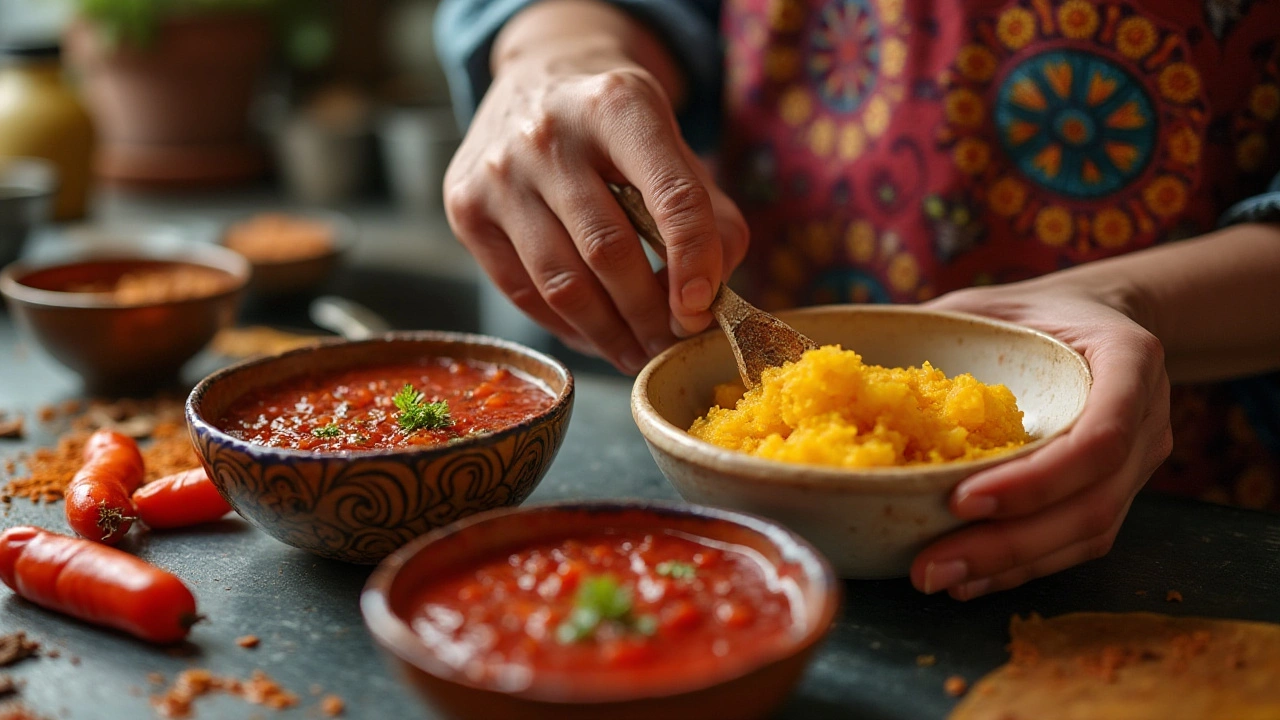Condiment Corner: Indian Sauces, Chutneys & Spice Tips
When you cook Indian food, the magic often hides in the condiments. A good chutney, a splash of pickle, or a pinch of spice blend can turn a simple dish into something exciting. On this page we’ll give you the basics you need right now, plus quick pointers from our most useful posts.
Why Condiments Matter in Indian Cooking
Condiments add the final punch of flavor, texture, and aroma. They balance heat, cut richness, and bring fresh notes to heavy curries. Think of them as the soundtrack that makes the main dish sing. Whether you’re serving biryani, dosa, or a plain roti, a side of coconut chutney or tangy mango pickle brings the meal together.
Quick Tips from Our Top Posts
One of our readers asked, “Do you cook chutney with the lid on or off?” In the post Do You Cook Chutney With the Lid On or Off? we explain that keeping the lid off helps steam escape, giving you the right thickness without splatter. For raw chutneys, a quick blend and a splash of lemon keep the color bright.
If you’re worried about bitterness, check out How to Cancel Out Bitter Taste in Food. A pinch of sugar or a few drops of dairy can tame the edge, especially in tamarind or raw mango chutneys. It’s a simple trick that works every time.
Our guide on Best Ways to Eat Chutney suggests pairing coconut chutney with idli, mango chutney with fried snacks, and tomato chutney with grilled meats. Play around – the right dip can change a snack from ordinary to addictive.
Looking for healthier options? The article Best Indian Curries for Weight Loss notes that swapping heavy cream sauces for yogurt‑based raitas keeps the dish light while still delivering creamy texture. Use raita as a condiment alongside spicy curries for balance.
When you’re short on time, the quick‑breakfast ideas in Quick and Healthy Breakfast Ideas for Busy Mornings include a simple coriander‑mint chutney spread on toast. It’s a fast way to add Indian flavor to your morning without cooking a full meal.
Don’t forget storage. The post Disadvantages of Chutney: Health Risks, Preservation Issues & Hidden Downsides warns that homemade chutney can spoil quickly if left at room temperature. Keep it in an airtight jar in the fridge and use within a week, or freeze portions for later.
Finally, spice blends are the unsung heroes of Indian condiments. A good garam masala or sambar powder can be mixed into chutneys for an extra depth. Grab a pinch, stir it in, and taste the difference.
Bottom line: a few well‑chosen condiments can elevate any Indian dish. Use the tips above, experiment with flavors, and you’ll see how easy it is to bring authentic taste to your kitchen.
Understanding the Difference: Red Onion Marmalade vs. Chutney
Exploring whether red onion marmalade is the same as chutney, this article delves into the distinctions and commonalities between the two. Both versatile and flavorful, these condiments enhance a variety of dishes. Learn about their unique ingredients, preparation methods, and the best ways to use them in your kitchen. This guide will provide tips and insights for enhancing your culinary skills with these savory spreads.
